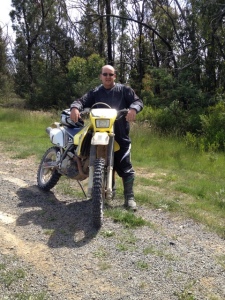Doris recently wrote:
My husband has been on dialysis for 3 yrs this May. Before kidney failure he had diabetes and heart disease. To look at him, you wouldn’t think he was sick at all. But this year in December, he is planning to stop dialysis.
The thing is, I don’t blame him. With all these diseases he has been through hell.
He doesn’t really think he’s going to die, and that would be so awesome.
So he’s trying to see if there is a way to control his potassium. Any suggestions?
Hi Doris.
My initial reaction is that your husband probably looks healthy because like many others on dialysis, he IS mostly healthy. That’s because he is getting good quality dialysis and his fluid and body chemistry are mostly well balanced.
As anyone who is healthy on dialysis will tell you, it is a delightful but precarious place to be. One slip in diet, dialysis or the physical world and that healthy look and feel becomes a rosy memory. So he should enjoy it and not take it for granted.
With regard to staying alive after stopping dialysis, there is only a fine line between hope and self-delusion. And in this regard, he is not Robinson Crusoe. We have all hoped, prayed and believed against all evidence that our kidney disease will go away. It is a normal part of the grieving process. However, one way or another most of us have been proved wrong.
Unless his kidney disease is of a temporary nature, it is highly unlikely that he will live if he stops dialysing. If he has some residual kidney function (ie he is still producing urine) and the kidney can recover, there may be hope. However, based on his having diabetes (which is the major cause of kidney failure in the western world) it is likely that his kidneys are damaged beyond recovery.
Also, the first and most obvious outcome of kidney failure is fluid overload, which makes breathing difficult and overworks the heart. Sadly, the most common cause of death among kidney patients is heart attack. Most of us have heart disease, usually caused by years of fluid overload and high blood pressure. If your husband has a history of heart disease, then stopping dialysis will make it worse.
But my question is: Why stop? He seems to be reasonably healthy; if he not in pain, not bedridden or unable to function normally, why seriously contemplate stopping? Is he serious, or simply angry and frustrated at having to dialyse? It takes a long time to accept life on dialysis. It took me about eight years and two transplants. I still don’t like it but I accept it. It keeps me healthy and I can do most of the things I want, when I want. To misquote a popular song, if you can’t be with the life you love, love the life you are with.
After all, there’s no coming back from the alternative; we have all faced the question: To be or not to be?
I often image that there is no such thing as dialysis, and I died in 1995. Over the 20 years since then my kids have grown up – two have married wonderful people and have produced four delightful grandchildren, and the third will be married to another beauty next year; Julie and I started a business together, where I work from home and I love it; we have travelled around Australia, to Europe, and Asia (where I sampled the delights of foreign dialysis centres) and I would have missed the lot.
Luckily, somewhere along the way, I realised that I like my new life. As they say here, I wouldn’t be dead for quids (dollars).
Sit down and have a talk with your husband. One of those life talks: Why now? Why December? What if he’s wrong? Talk about your future together and especially yours if he dies. Talk about what he will miss. Decisions like this are joint decisions. If you want him around for a while to come, don’t be so agreeable and understanding. Not blaming him for wishing he was dead? Maybe. But accepting that as a sensible decision? I don’t think so.
With regard to wanting to control potassium in his diet (which is a good sign!), have a look at the Dealing with Potassium leaflet I received when I asked my unit the same question about my potassium level.
Good luck and keep in touch. Greg

 Professional dialysis recruitment
Professional dialysis recruitment Typical prices for a black (red) market kidney transplant in these transplant tourism countries. Here’s a great 3 minute summary of the state of the rest of the world’s global organ trade:
Typical prices for a black (red) market kidney transplant in these transplant tourism countries. Here’s a great 3 minute summary of the state of the rest of the world’s global organ trade: 


